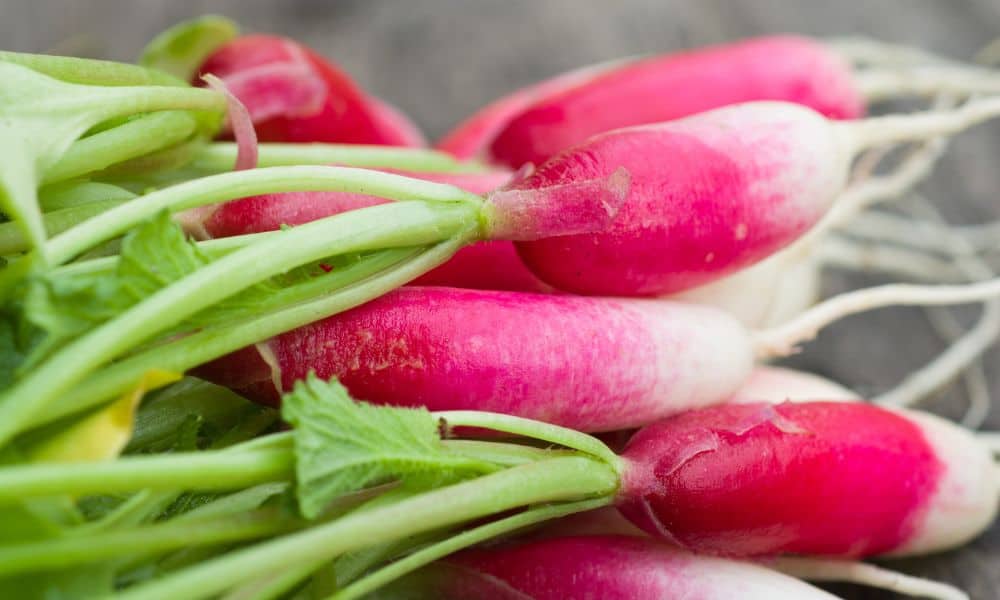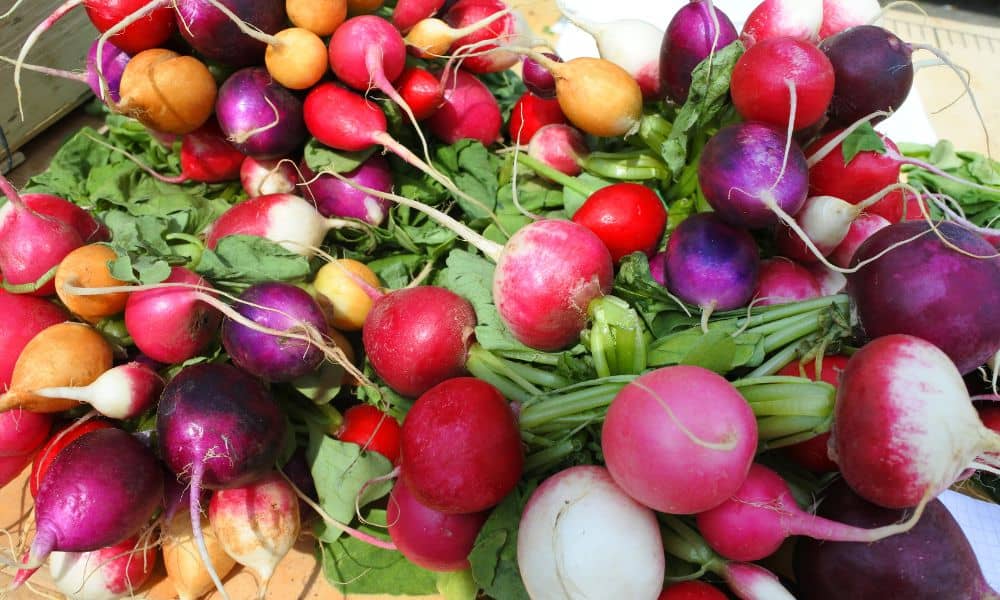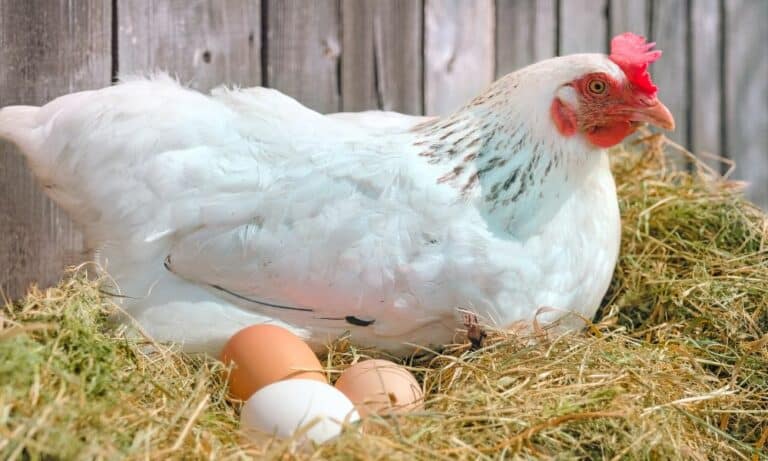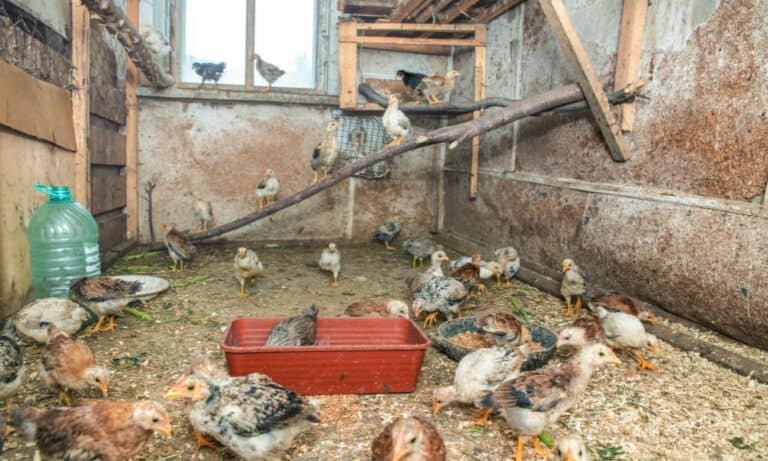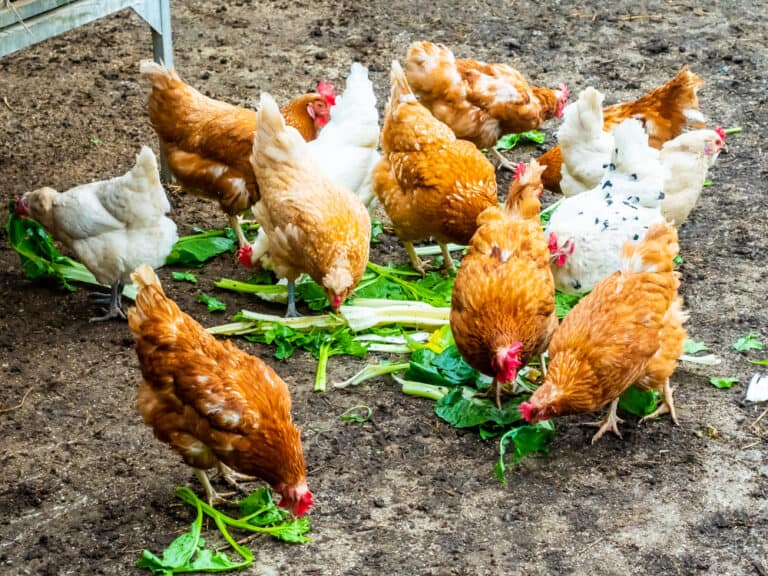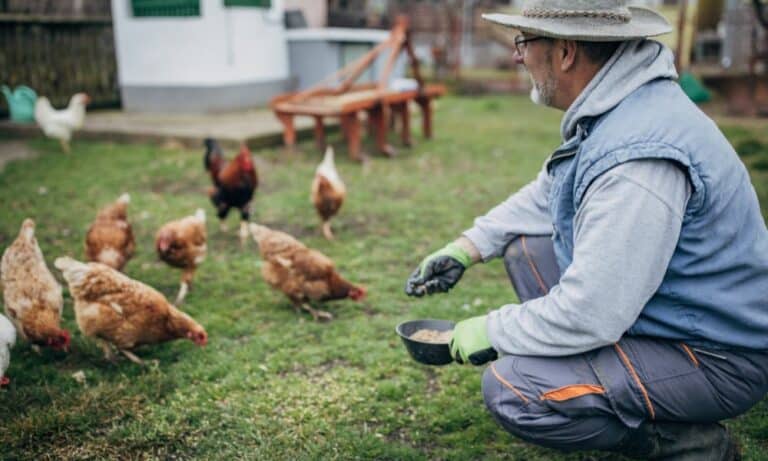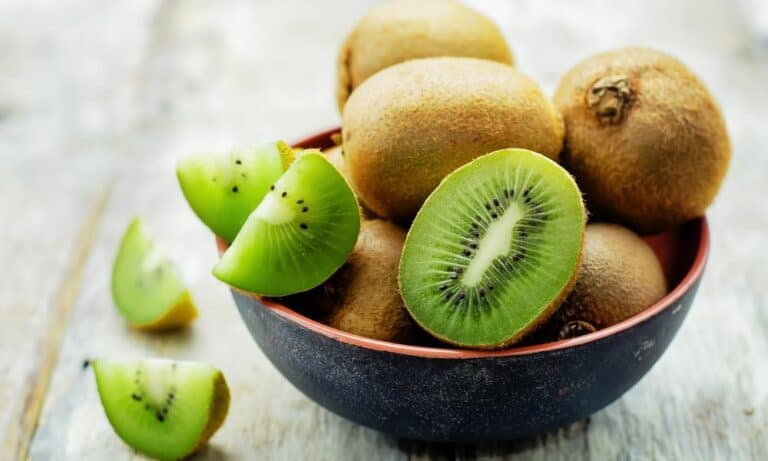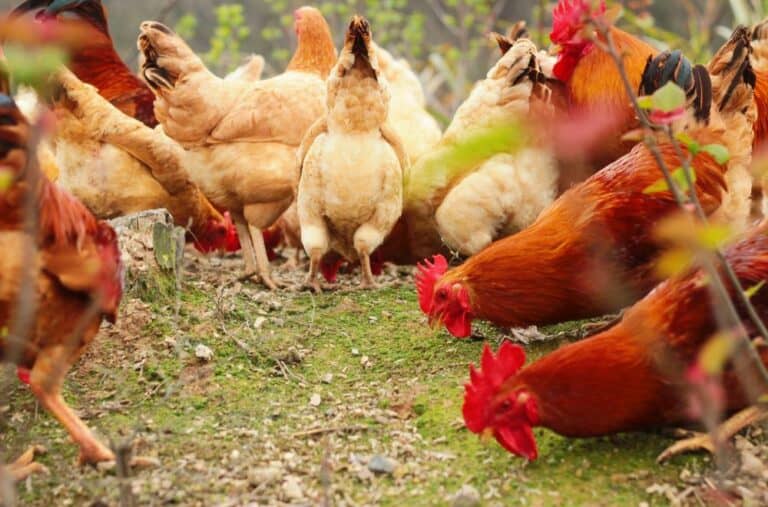Poultry enjoys various food but has some limitations, so owners often hesitate can chickens eat radishes. Besides, there are questions about their nutritional content and some parts’ possible toxicity.
There is no need to worry when it comes to radishes. This root vegetable is healthy for your fowl so you can offer all parts without hesitation. They are excellent treats, but you should check which types are edible before using them to feed chickens. Let’s take a look.
Nutrition content of 3.50 ounces (100 g) of raw radishes |
|
| Nutrients | Amount |
| Calories | 16 Kcal |
| Protein | 0.68 g |
| Fats | 0.1 g |
| Carbs | 3.4 g |
| Sugar | 1.68 g |
| Fiber | 1.6 g |
| Water | 95.3 g |
*by USDA
What are Radishes?
Radishes are root veggies from the Brassicaceae family grown in Asia for centuries. Nowadays, they are well-known worldwide and one of the most favorite crunchy, spicy-flavored salad vegetables.
You can recognize numerous varieties that come in different tastes, colors, shapes, and sizes. Some farmers add them to gardens as easy-grown and excellent companion plants. The best part is that even novices have no problems handling them.
You can find a few radish types with different health benefits and nutritional values. The most common types selling in the market are a safe addition to your chickens’ diet when offered in moderation.
Red (table) radishes
Red radishes were grown in Asia before the Roman Empire’s establishment. They are the most common variety nowadays, and you can find them in almost every market in the spring. They are round-shaped with red skin and bright white flesh.
Daikon radishes
Thanks to their elongated look, these mild-flavored, white winter radishes resemble large carrots. They originated in Asia and are highly popular in Japan.
Watermelon radishes (shinrimei)
This daikon radishes’ heirloom variety comes from China and is recognizable for its atypical look. Their skin is off-white or green, while the flesh is red, pink, or magenta. Even though this combination looks like a watermelon, their tastes are not even close.
Can Chickens Eat Radishes?
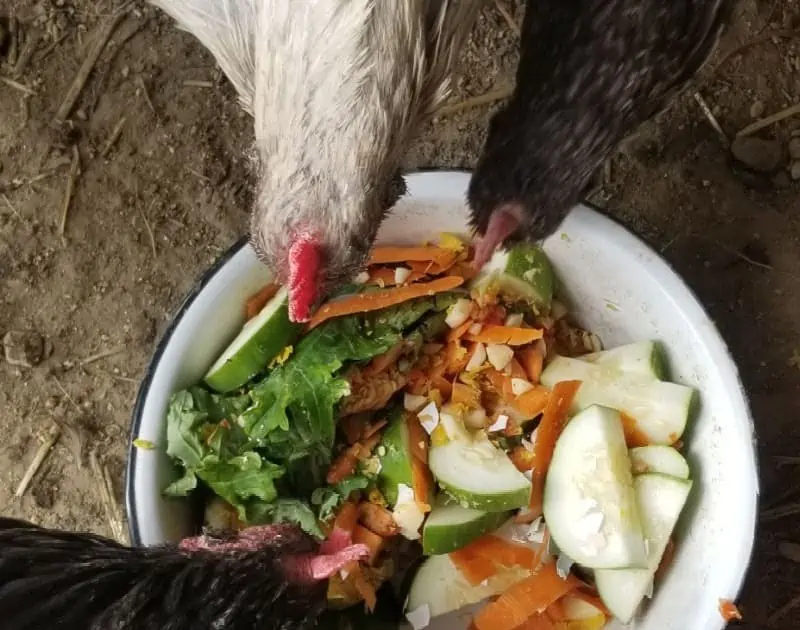
Chickens like eating radishes and consider even their greenery yummy. Since they contain 90 to 95% water, adding them to a regular flock diet is an excellent way to keep them hydrated during the summer.
Despite excellent nutritional value, radishes are not ideal for everyday digestion, so you should limit the offered amount to several times a week. Some owners feed their fowl with this veggie daily but toss only a few with leaves.
Raw radishes
Raw radishes are rich in water but still hard for chickens’ beaks. Therefore, chop them into small pieces before adding them to the feeder. You can mix grated or chopped radishes with greenery, egg yolk, or flax seeds to provide a well-balanced meal for your fowl.
On the other hand, you can use smaller ones to organize entertainment for your flock. Toss a few and enjoy looking at them while running after their beloved veggie and trying to peck at it.
Radishes leaves and stems
Chickens enjoy nibbling greenery, so you can be sure they adore radish leaves whenever getting them. Toss stems with fresh foliage in the chicken run and let them enjoy a fresh meal.
This greenery is safe and non-toxic food full of valuable nutrients, and you can add moderate amounts to their regular feed during the season. You can also offer it as leftovers after preparing radishes for your family.
Be careful when you keep your flock in free range to prevent them from entering your garden. Otherwise, they can consume leaves and reduce radish growth underground.
Radish sprouts
Radish sprouts are packed with the same nutrients as full-grown veggies, and many people like eating them raw. Even though they are edible and tasty for people, they may carry harmful bacteria.
On the other hand, radish sprouts are perfectly safe for chickens to consume. Still, most farmers don’t want to see fowl nibbling them in the garden and preventing them from becoming mature.
Cooked radishes
Radishes can be too hard for chicks and smaller chicken breeds. One of the ways is to cook this delicious and valuable vegetable before serving it, making it softer. The only restriction is to avoid adding seasonings, including onion and garlic while preparing them.
Radish powder
Besides offering fresh radishes to your fowl, you can grind and dry them. Then, make a powder and add it to chicken feed. That way, your chickens can get valuable nutrients without upsetting their stomachs.
Can chicks eat radishes?
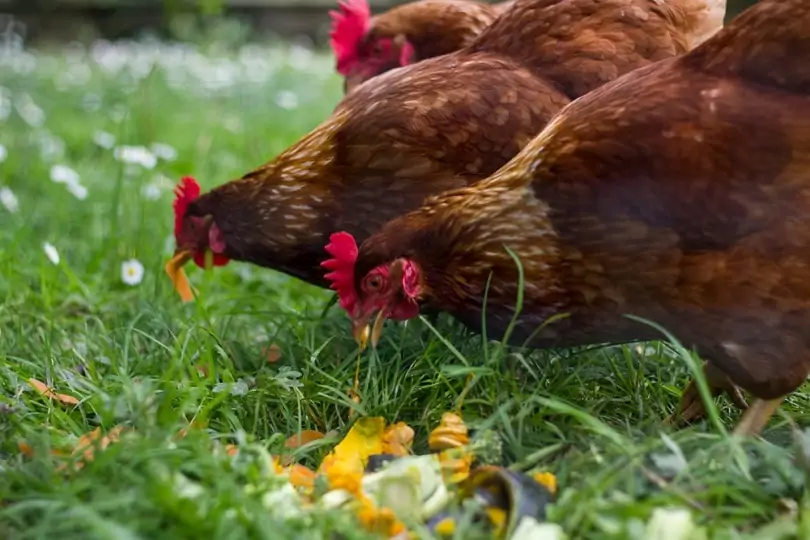
Chicks probably can’t peck radishes with their tiny and still soft beaks. Besides, high water content and strong tang make this veggie hard to digest, disturbing their sensitive stomachs and causing diarrhea.
Even though some owners include radishes in the chicks’ diet, cooking them is probably better than offering them raw. Grind or chop this root vegetable and let the chicks take tiny bites. Be prepared to help in case of choking.
Ways to Feed Your Chickens with Radishes
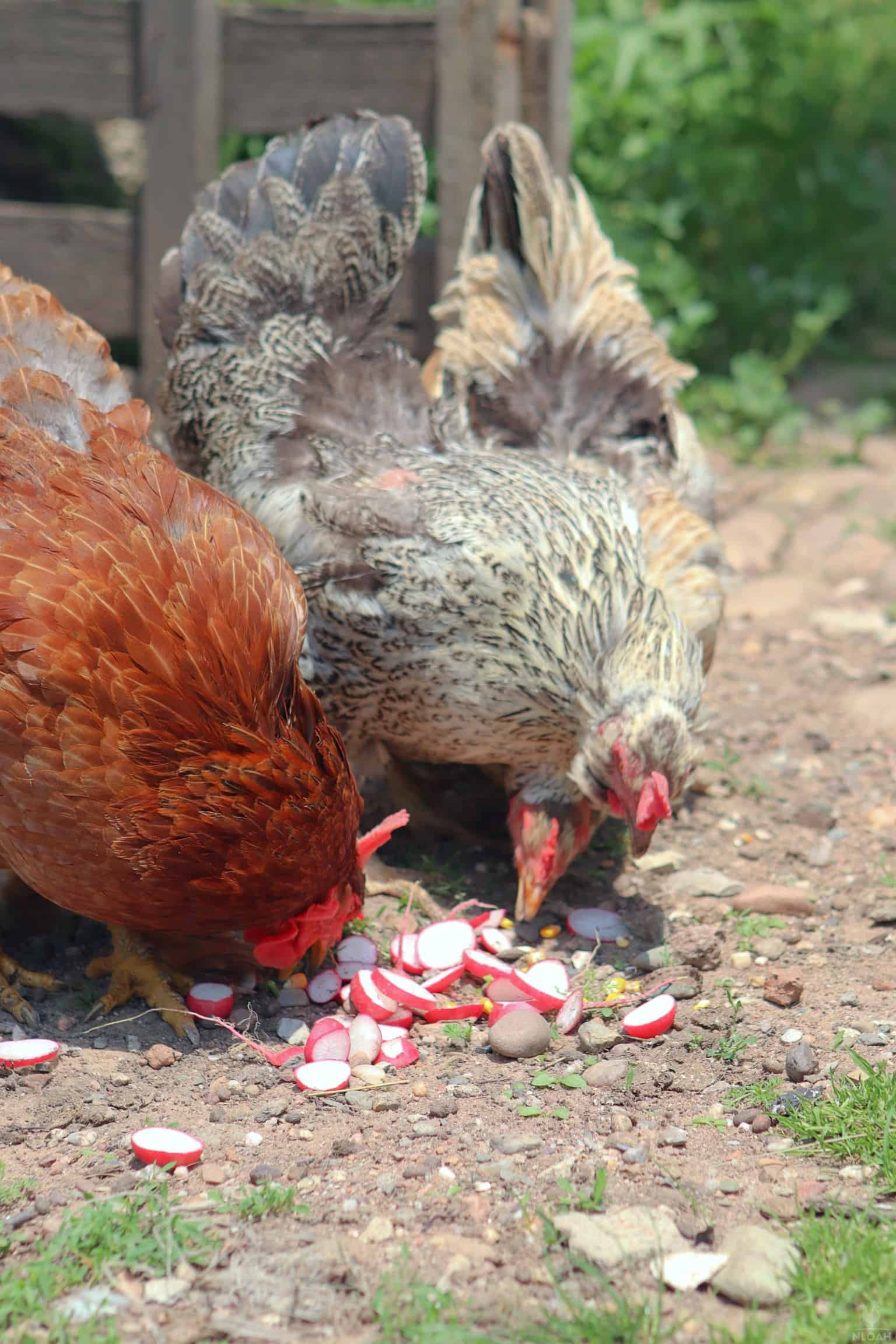
You can offer radishes to your chickens any way you want. If you toss a few on the ground, your flock will start chasing them and have great fun before pecking them. If you want to help your chickens consume these veggies quicker, chop them first.
Cut leaves into shorter pieces before feeding to make consuming more effortless. You can also grate radishes and their greenery and mix them with other vegetables or standard chicken food.
One of the summer tricks is to soak radishes in cold water first to provide additional hydration to the flock. Sometimes chickens refuse to eat radishes because of their specific taste and crispiness. In such a case, the best solution is to cook them for about 10 minutes. Take care to cool them before feeding.
There is no strictly recommended amount of radishes for chickens. However, you should never offer too many at once to prevent stomach upsets, particularly in young birds. Be aware that such strong-tasting food may impact egg flavor when ingested too often.
Most farmers provide one radish per 5 to 6 chickens once or twice a week. If you spot uneaten pieces on the ground after your flock has finished their meal, remove them. Otherwise, they will start rotting or attract rodents to the chicken run.
Washing radishes before feeding to remove soil residues and pesticides is always desirable. Since chemicals are harmful to poultry, you should avoid commercially-grown radish varieties whenever possible.
Radishes Nutritional Value
Radishes can be beneficial for your flock because of their water content and high nutritious value. They are an excellent source of fiber, minerals like calcium, magnesium, potassium, zinc, and iron, B complex vitamins, and vitamins C, A, E, and K, beneficial to:
- Reducing stress
- Increasing immunity
- Speeding the growth rates
- Controlling blood pressure
- Supporting cell regeneration
- Synthesizing collagen
- Improving digestion and preventing constipation
- Contributing to higher egg production
- Strengthening bones and eggshells
Since water makes up over 90% of radishes, they are an excellent treat for keeping chickens well-hydrated. Thanks to high anthocyanin levels, this vegetable allows proper heart functioning.
Content of vitamins and minerals in 3.50 ounces (100 g) of raw radishes |
|
| Nutrients | Amount |
| Vitamin A | 7 IU |
| Vitamin C | 14.8 mg |
| Vitamin K | 1.3 µg |
| Niacin | 0.254 mg |
| Pyridoxine | 0.071 mg |
| Thiamin | 0.012 mg |
| Riboflavin | 0.039 mg |
| Pantothenic acid | 0.165 mg |
| Choline | 6.5 mg |
| Folates | 25 µg |
| Fatty acids | 0.032 g |
| b-carotene | 4 µg |
| Lutein and zeaxanthin | 10 µg |
| Calcium | 25 mg |
| Phosphorus | 20 mg |
| Magnesium | 10 mg |
| Potassium | 233 mg |
| Sodium | 39 mg |
| Manganese | 0.069 mg |
| Copper | 0.05 mg |
| Iron | 0.34 mg |
| Zinc | 0.28 mg |
| Selenium | 0.6 µg |
| Fluoride | 6 µg |
*by USDA
Foliage is packed with essential amino acids crucial for repairing damaged tissue and promoting muscle growth. The high content of antioxidants helps in fighting off harmful free radicals.
Only a few radishes can keep chickens full of energy and active throughout the day. You can offer this low-calorie veggie when they are overweight or obese since it has excellent properties for weight loss promotion.
Besides being a delicious food, radish leaves help to treat skin conditions. Thanks to their antibacterial properties, you can apply them locally when fowl suffer from bumble feet or scaly leg mites.
Warnings!
You should avoid feeding your flock with grocery-bought radishes because of the high content of pesticides. Chickens appreciate this veggie-type cooked but avoid preparing it with harmful ingredients.
Never overfeed hens with radishes because their specific taste affecting the egg flavor is repulsive to some people. Besides, they may cause gas and bloating in chicks.
Feeding fowl with this root vegetable can be beneficial only when you offer it in a moderate amount. In such a case, its water content and freshness are crucial for poultry during warm months.
Finally, gradually introducing this vegetable to the chicken diet is always the best way to get the desired result without side effects.
Summary
Chickens should eat radishes and their greens in moderation. Only that way it is possible to prevent digestive problems, particularly in chicks. This veggie is an excellent treat that adds freshness and valuable nutrients to their diet and provides plenty of water during the summer. Start with a few radishes and leaves to see the flock’s response, and increase the amount later.

